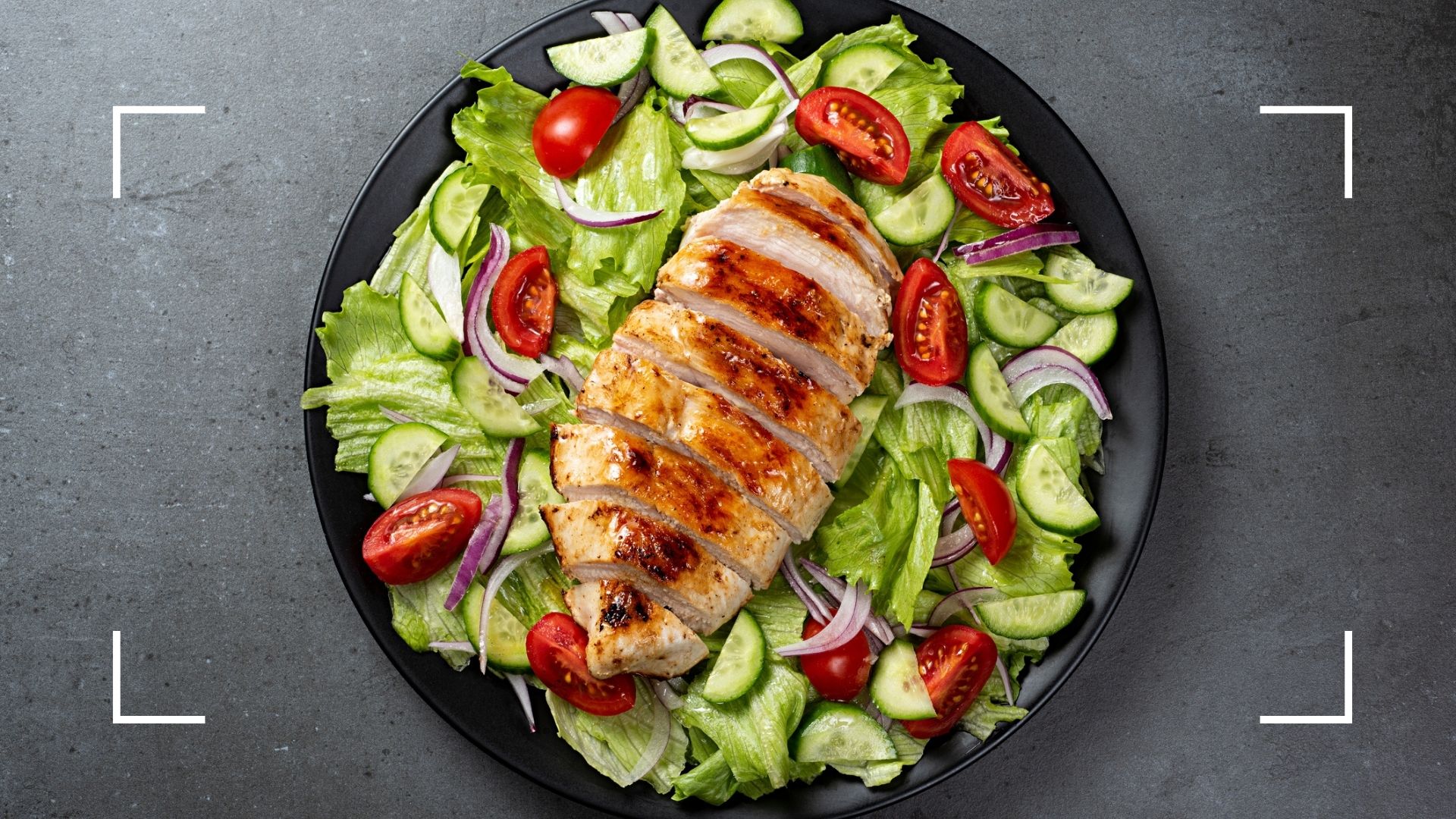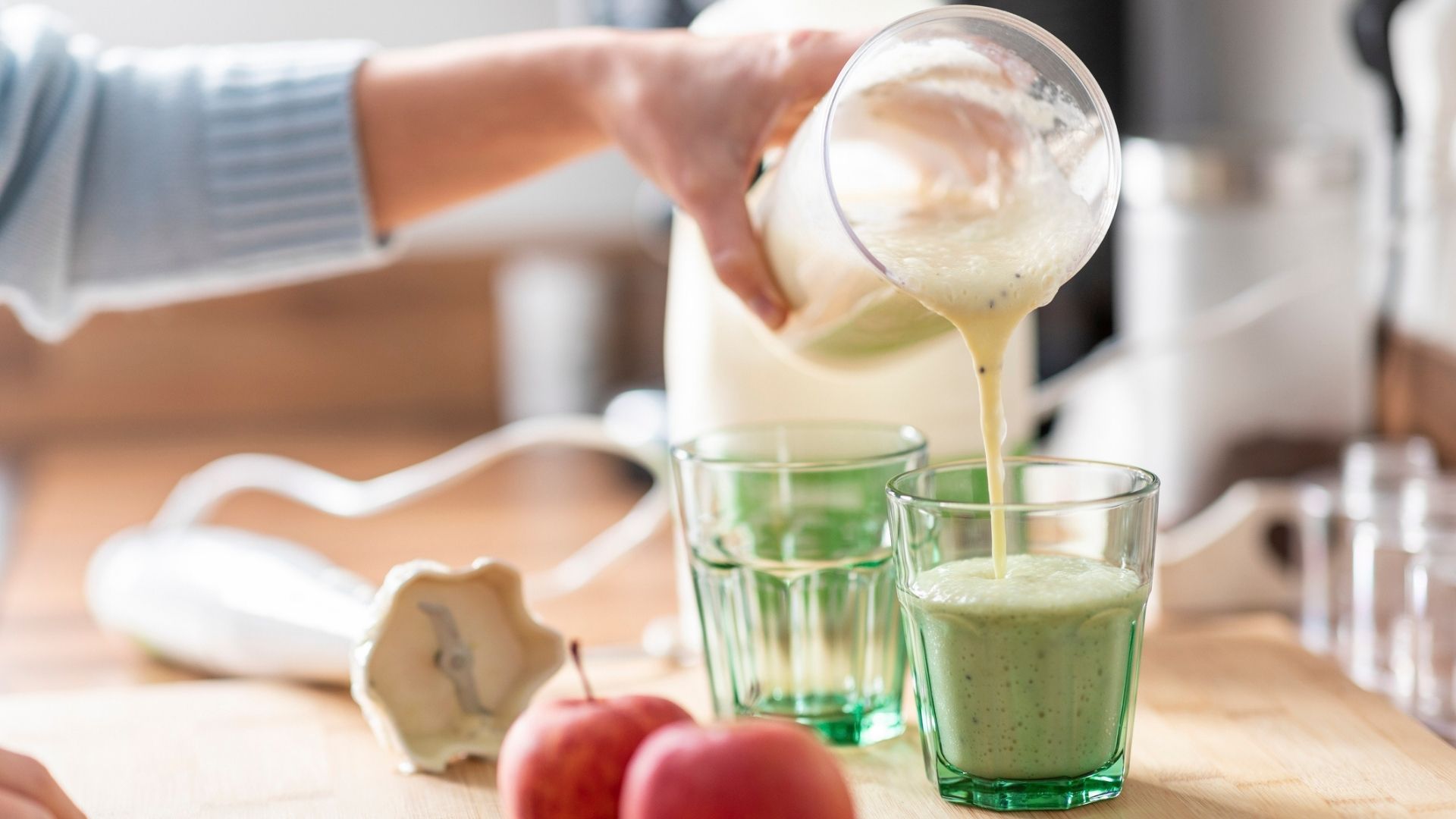The 5:2 diet: What is it and does it work for weight loss?
Want to try the 5:2 diet? A nutritionist explains how the popular plan works for weight loss

The 5:2 diet is an eating trend that's really stuck around. Created in 2013 by Dr Michael Mosley, a former doctor and weight loss expert, and BBC presenter and food journalist Mimi Spencer, it's become one of the most popular forms of intermittent fasting over the years.
When it comes to losing weight, often the hardest part is giving up the foods that you enjoy. While you can't just eat whatever you like on this diet plan, unlike many other popular diets, there's no specific restriction on what foods you can and can't eat - just how much of them you can eat.
The 5:2 diet plan may be great for those who want to learn how to lose weight in a week or a shorter amount of time, but it's certainly not for everyone. Here, a nutritionist explains exactly what the 5:2 diet plan is all about and how it works for weight loss.
What is the 5:2 diet plan?
The 5:2 diet is a version of intermittent fasting where you reduce your calorie intake on two days of the week while eating 'normally' for the other five days. When it was first invented back in 2013 by Dr Michael Mosley, a former doctor and weight loss expert, and BBC presenter and food journalist Mimi Spencer, the diet was extremely restrictive. This has changed in recent years, though.
"Followers were initially advised to eat a very reduced number of calories, 500 for women and 600 for men, on fasting days. The diet has since been revised to restrict energy intake to 800 calories on fasting days, while sticking to a healthy low carbohydrate, Mediterranean diet the rest of the week," explains Rob Hobson, head of nutrition at Heathspan.
The change was something that Dr Mosley himself made, following research that revealed a 500-calorie day was largely unsustainable. "When I came up with the 5:2 diet, intermittent fasting was a radical idea, but one that really resonated. One thing that has become clear is that 800 appears to be a 'magic' number when it comes to weight loss, based on studies which show people find it easier to follow, but they still get the same weight-loss advantages," he said, referring to a study by Alicante General University Hospital among others.
"And studies suggest it’s the amount of weight you lose in the first month that predicts the long-term success of losing weight."
Sign up to our free daily email for the latest royal and entertainment news, interesting opinion, expert advice on styling and beauty trends, and no-nonsense guides to the health and wellness questions you want answered.

Does the 5:2 diet plan work for weight loss?
Yes in combination with regular exercise, the 5:2 diet can help with weight loss. However, as with any diet or eating plan, the most important factor will be whether you are in a calorie deficit to lose weight. This is when you eat fewer calories than you burn every day and it's one of the most common intermittent fasting mistakes you can make.
"There is no magic to this diet," explains Hobson. "It is simply a case of calories in and out so you are essentially reducing your overall calorie intake over the course of the week. There is some confusion surrounding this diet. Non-fasting days need to center around healthy eating. You cannot eat what you want if you are trying to lose weight. Also, this is not a keto diet, fasting every 3 days does not put you into ketosis."
The plan will only work though if you eat healthily on the five non-restricted days of the 5:2 diet as you have to stay in a deficit the whole way through, or at least for most of it, for weight loss to occur. "The other five days are not 'free' days but are described as eating 'normally', which basically means eating a healthy, balanced diet. What 'normal' looks like is quite vague, but as long as you are consistent in your 'normal' days then the calorie deficit should have an impact on your weight loss," he says.
Exercise is an important part of this, although Hobson says, "If you are training quite hard to help with your weight loss goals then you may need to plan your training sessions to non-fasting days if you find you are lacking energy to get through them when fasting."
Importantly, when it comes to the 5:2 diet and weight loss, there is evidence to suggest that the plan is an effective way to get into this important deficit. A recent study published by Queens University London separated 300 participants into three groups: those receiving standard dietary advice, those receiving 5:2 self-help advice, and those getting 5:2 self-help advice along with weekly support sessions.
The research found that those following the 5:2 diet lost similar amounts of weight to those following traditional dieting methods, i.e. reducing calorie intake. However, they also found that people preferred the intermittent fasting approach which, importantly, resulted in better adherence to the diet plan. Also, while the levels of weight loss were similar between groups, more people lost weight on the intermittent fasting plan.
"It was also observed in the study that the groups following the 5:2 diet had a more positive experience compared to those following a more traditional approach as well as more success when involved in weekly support sessions," Hobson explains.
So ultimately as long as you're in the deficit, "regardless of what the science says, at an individual level, the most effective diet is always going to be the one that someone can stick to."
Is the 5:2 diet suitable for everyone?
The 5:2 diet is suitable for most people but it can be a difficult one for those who are very overweight and consuming a lot of calories per day, as the reduction could be quite substantial.
"For instance, dropping to 500 calories from an excess of 3000 calories may be too much of a stretch," Hobson says. "The new version of the diet gives more leeway. The basic principle originally was dropping your calories to 25% of your current intake, so at 800 calories this is much more achievable for those people with a current high energy intake."
The 16:8 diet is another form of intermittent fasting that may be suitable for those who would struggle to follow such intense calorie restriction, as it's based more on restricting the time you have to eat.
As always when it comes to changing your eating habits, consult a doctor first.

What can you eat on the 5:2 diet?
There are no set foods that are off-limits when it comes to the 5:2 diet, but the new version recommends adherence to the Mediterranean diet which means that foods like legumes, fruits, vegetables, seeds, and nuts are encouraged. It also advises low carbs.
"To put this into practice you basically make protein and veggies the main part of your meal and team these with small servings of high-fiber carbs such as brown rice, pasta, bread, and other whole grains," Rob says, offering the following example for those looking to try the 5:2 plan.
Breakfast: Protein shake (85 calories)
"You could start your day with a protein shake," says Hobson. Along with the many other health benefits of protein powder, adding additional protein to your diet will ensure that you don't get too hungry when following the 5:2 diet.
Protein, along with fiber, is the most filling macronutrient as it takes longer for the body to digest it than others like carbohydrates and fats. So more generally too, it's better to focus your eating on high-protein foods.
"There are also some formulations on the market that offer high protein and low calories, such as Elite All Blacks Clear Whey Protein Isolate." You can also pick up one of the best protein shakes for weight loss, as these are formulated in a similar way.
For a snack between breakfast and lunch, you could opt for a piece of fruit or a pack of seaweed thins (25 calories).
Lunch: Chicken salad (160 calories)
"100g chicken breast, grilled, without skin, plus a salad of lettuce, cucumber and tomato dressed with lemon juice," offers Hobson. For a snack between lunch and dinner, miso soup (50 calories).
Dinner: Prawns with quinoa
"75g cooked king prawns plus 2 tbsp cooked quinoa and salad leaves dressed with lemon juice," he suggests. Naturally, if you are vegan or vegetarian, there are various other vegan protein sources you can swap in for the meat and fish suggested by Hobson. These can include staples like tofu, falafel, and beans.
In total, nutritionist Rob Hobson's suggested day one meal comes to 500 calories. As the plan now suggests that this is unsustainable, adding an additional 300 calories to your daily diet is highly recommended. This is a great chance to add in any additional fruits and vegetables, along with any more 'indulgent' foods like those higher in sugar and saturated fat.
Continuing to eat these kinds of foods on the 5:2 diet won't prevent it from working, as long as you stay in a calorie deficit, and it can help you stick at it for longer as you won't be missing out on the food and drink you enjoy.
Miriam worked for woman&home for over five years and previously worked on the women's lifestyle magazines Woman and Woman's Own.